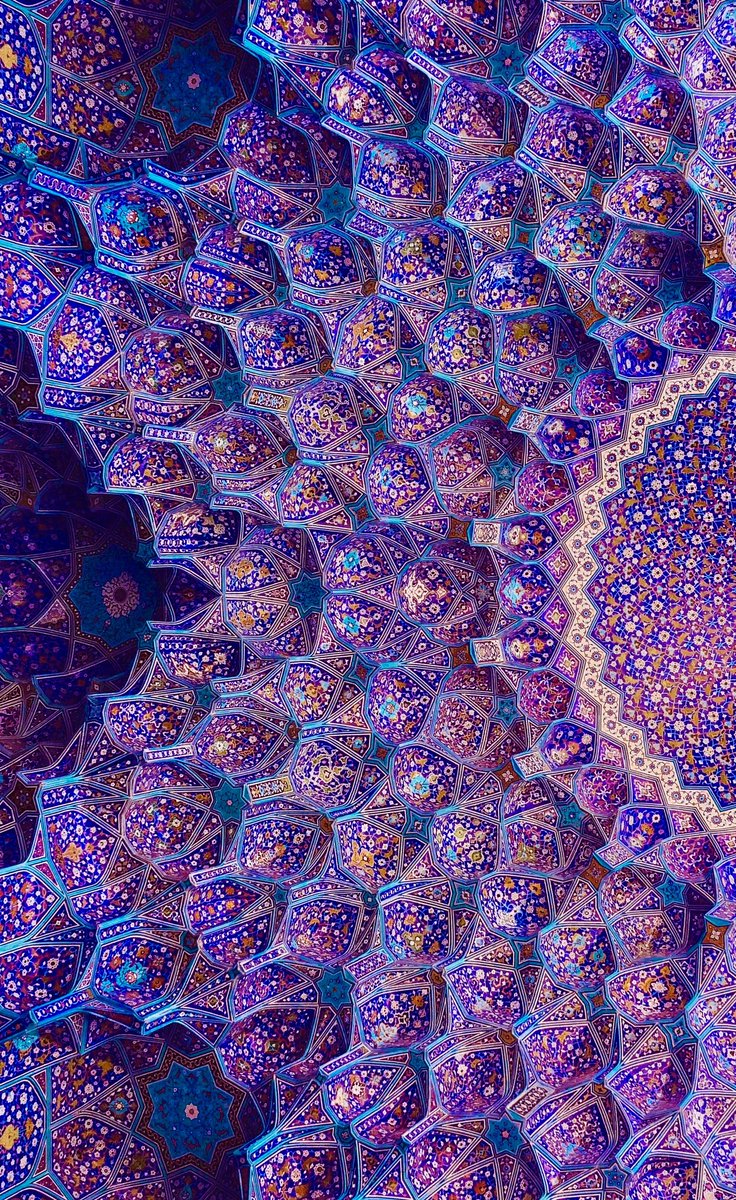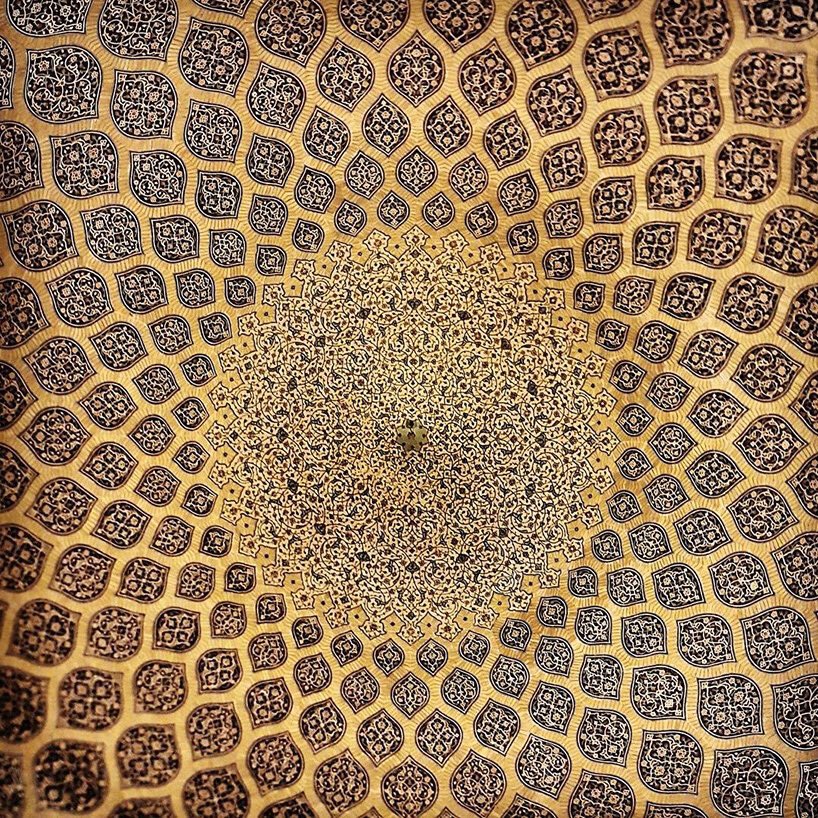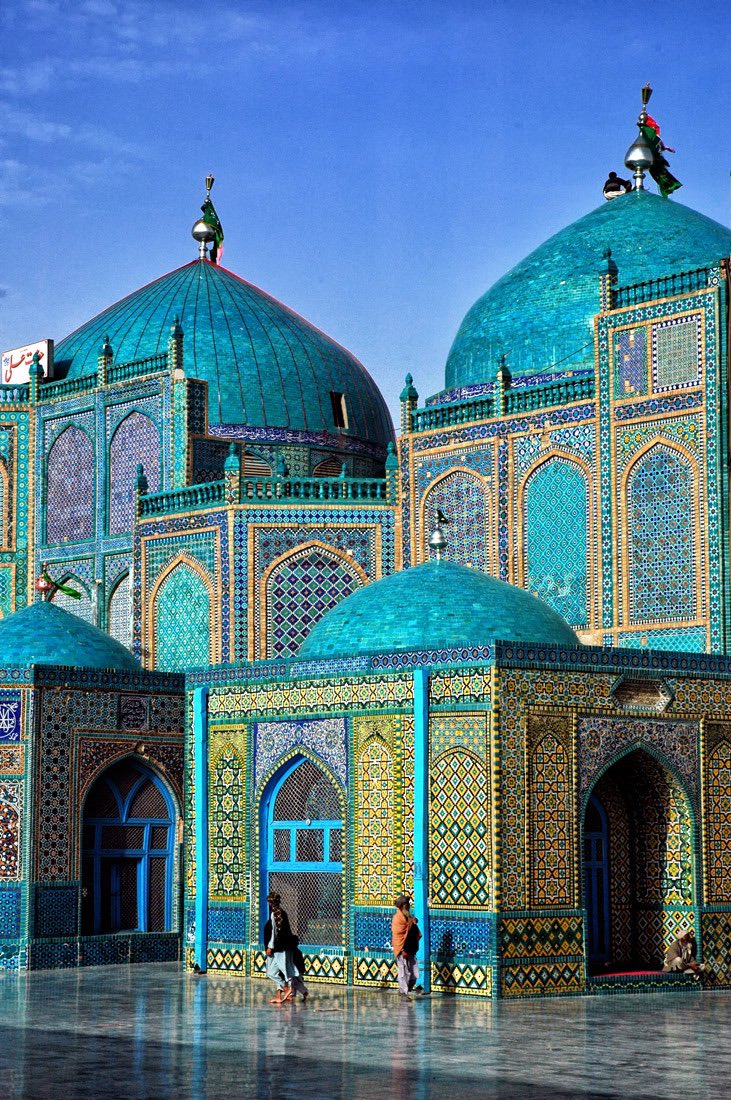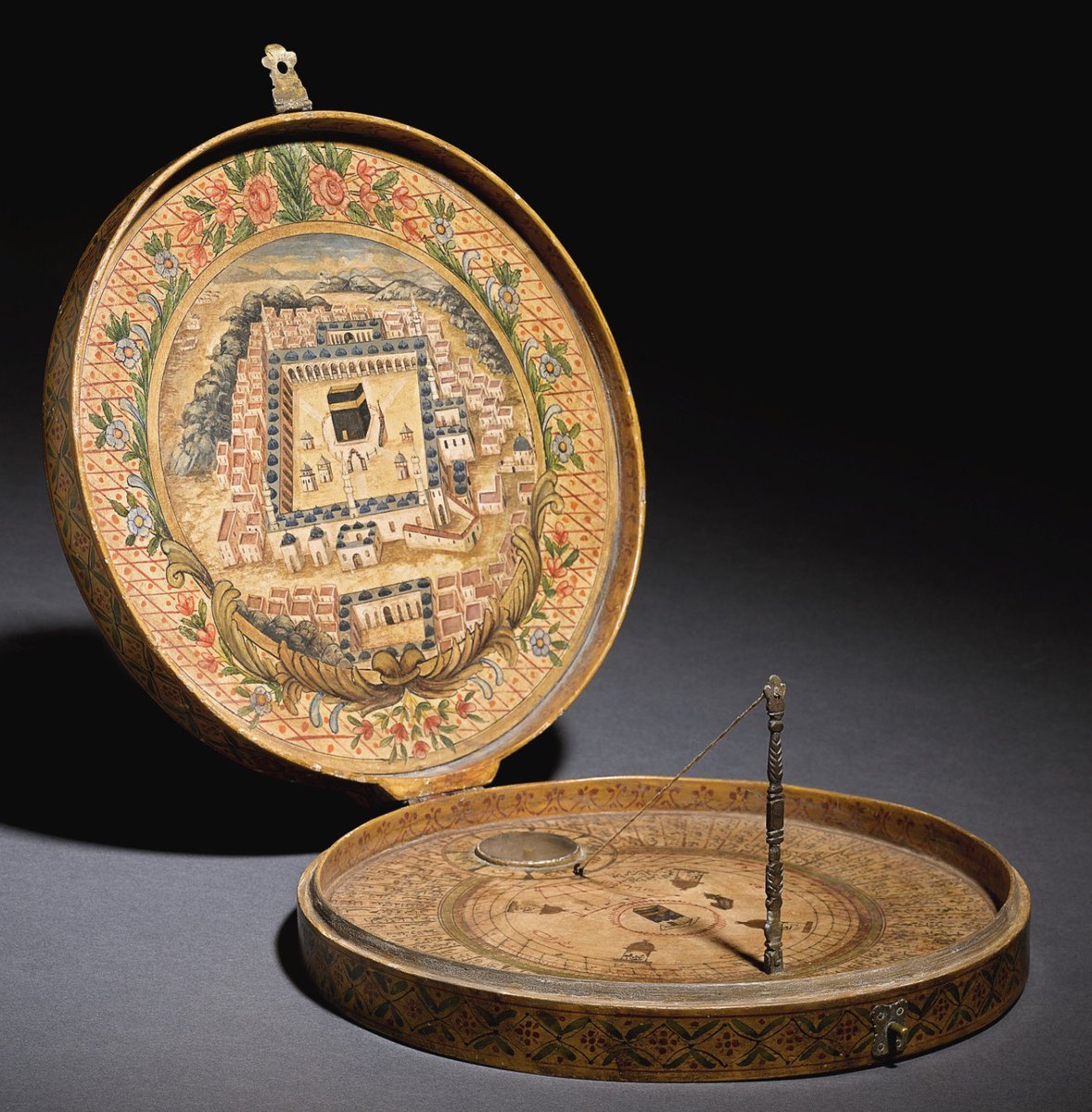
Rugs are a significant part of Muslim culture. Used for prayer, ornamentation & decoration, they are often collected as family heirlooms, & passed down from generation to generation.
For Ramadan, here are 24 Islamic rugs in museums & collections across the world…
A thread…
For Ramadan, here are 24 Islamic rugs in museums & collections across the world…
A thread…

1/ Prayer Rug
1570s-1590s, Safavid
Iran
Most of these preserved rugs were intended as diplomatic gifts from the Safavid court to the Ottomans. The poetic inscription on the border is in nasta`liq script, in Persian verse & includes the name of Sultan Murad #Ramadan
@MIAQatar
1570s-1590s, Safavid
Iran
Most of these preserved rugs were intended as diplomatic gifts from the Safavid court to the Ottomans. The poetic inscription on the border is in nasta`liq script, in Persian verse & includes the name of Sultan Murad #Ramadan
@MIAQatar

2/ Prayer Rug
18th century
Kula, Manisa province, Anatolia, Turkey, Asia
Prayer rugs often feature a mihrab, or arched niche. This carpet is distinctive for its pairs of slender columns, a characteristic of Nasrid architecture from Muslim Spain #Ramadan
@StlArtMuseum
18th century
Kula, Manisa province, Anatolia, Turkey, Asia
Prayer rugs often feature a mihrab, or arched niche. This carpet is distinctive for its pairs of slender columns, a characteristic of Nasrid architecture from Muslim Spain #Ramadan
@StlArtMuseum

3/ Prayer Rug
late 16th century
Istanbul, Turkey
The Ottoman workshops produced a great variety of carpet designs that usually employed a group of familiar elements, consisting of naturalistic flowers, lotuses, and palmettes, often combined with arabesques #Ramadan
@metmuseum
late 16th century
Istanbul, Turkey
The Ottoman workshops produced a great variety of carpet designs that usually employed a group of familiar elements, consisting of naturalistic flowers, lotuses, and palmettes, often combined with arabesques #Ramadan
@metmuseum

4/ Prayer Rug
18th century
Turkey.
This rug belongs to the group of prayer rugs from Ghiordes, a village between Izmir and Ushak, where most of the Anatolian prayer rugs were manufactured in the 18th–19th centuries #Ramadan
Museum of Mediterranean and Near Eastern Antiquities
18th century
Turkey.
This rug belongs to the group of prayer rugs from Ghiordes, a village between Izmir and Ushak, where most of the Anatolian prayer rugs were manufactured in the 18th–19th centuries #Ramadan
Museum of Mediterranean and Near Eastern Antiquities

5/ Prayer Rug
late 16th or early 17th century
Istanbul, Turkey, or Ottoman Cairo, Egypt
With a central niche is in the form of a mihrab, with decorative side-columns & a hanging mosque lamp & was hung on a wall, to serve as a mihrab for communal prayers #Ramadan
@KhaliliOnline
late 16th or early 17th century
Istanbul, Turkey, or Ottoman Cairo, Egypt
With a central niche is in the form of a mihrab, with decorative side-columns & a hanging mosque lamp & was hung on a wall, to serve as a mihrab for communal prayers #Ramadan
@KhaliliOnline

6/ Prayer Rug
19th century
Turkey
During their daily prayers, Muslims traditionally roll out small rugs to cover the ground, creating a ritually clean space for their devotions. Made using traditional techniques: knotted pile; symmetrical knot #Ramadan
@GWTextileMuseum
19th century
Turkey
During their daily prayers, Muslims traditionally roll out small rugs to cover the ground, creating a ritually clean space for their devotions. Made using traditional techniques: knotted pile; symmetrical knot #Ramadan
@GWTextileMuseum

7/ Prayer Rug
Early 18th century
Kashmir
Prayer carpet, Indian or Mughal, in so-called Millefleurs design; a vase with a single stem bearing multiple blossoms between two cypress trees #RamadanMubarak
@harvartmuseums
Early 18th century
Kashmir
Prayer carpet, Indian or Mughal, in so-called Millefleurs design; a vase with a single stem bearing multiple blossoms between two cypress trees #RamadanMubarak
@harvartmuseums

8/ Prayer Rug
late 18th–early 19th century
Mudjar, Anatolia, Turkey
Includes a less common depiction of stylized water pitchers in the green areas above the arch which may refer to ritual ablution, which is required of Muslims before performing prayer #Ramadan
@StlArtMuseum
late 18th–early 19th century
Mudjar, Anatolia, Turkey
Includes a less common depiction of stylized water pitchers in the green areas above the arch which may refer to ritual ablution, which is required of Muslims before performing prayer #Ramadan
@StlArtMuseum

9/ Prayer Rug
19th century
Iran
For believers in Islam, a rug is more than just a mat for praying; the rug’s design incorporates important Islamic symbols. This rug features the mihrab and depicts the gardens of paradise #Ramadan
@ChristiesInc
19th century
Iran
For believers in Islam, a rug is more than just a mat for praying; the rug’s design incorporates important Islamic symbols. This rug features the mihrab and depicts the gardens of paradise #Ramadan
@ChristiesInc

10/ Prayer Rug
16th century
India
This weaving is part of a group that uses the most popular motif of the emperor Shah Jahan’s reign: the single flowering plant, in this case a poppy, set within a niche #Ramadan
@metmuseum
16th century
India
This weaving is part of a group that uses the most popular motif of the emperor Shah Jahan’s reign: the single flowering plant, in this case a poppy, set within a niche #Ramadan
@metmuseum

11/ Prayer Rug
late 18th–early 19th century
Gördes, Anatolia, Turkey
Traditionally prayer rugs feature an arched niche representing the mihrab of the mosque. This architectural element orients worshippers towards the holy city of Mecca during prayer #Ramadan
@StlArtMuseum
late 18th–early 19th century
Gördes, Anatolia, Turkey
Traditionally prayer rugs feature an arched niche representing the mihrab of the mosque. This architectural element orients worshippers towards the holy city of Mecca during prayer #Ramadan
@StlArtMuseum

12/ Prayer Rug
16th century
Turkey
This Ottoman rug depicts a floral pattern. While the central arch has no columns to reflect the prayer niche, the arrangement of the blossom pattern is a kind of floral translation of the architecture #Ramadan
@walters_museum
16th century
Turkey
This Ottoman rug depicts a floral pattern. While the central arch has no columns to reflect the prayer niche, the arrangement of the blossom pattern is a kind of floral translation of the architecture #Ramadan
@walters_museum

13/ Prayer Rug
19th century
Iran
A silk kasha’s rug. The elegant niche suggests that this was a prayer rug, to be hung on a wall in the direction of Mecca, however, and not spread on the ground #Ramadan
@ChristiesInc
19th century
Iran
A silk kasha’s rug. The elegant niche suggests that this was a prayer rug, to be hung on a wall in the direction of Mecca, however, and not spread on the ground #Ramadan
@ChristiesInc

14/ Prayer Rug
16th century
Iran
Identified by its central niche design, the Qur’anic inscriptions in its border & names of God in its spandrels, relates to a group of rugs which were a diplomatic gift from Safavid Shah ‘Abbas I to Ottoman sultan Murad III #Ramadan
@metmuseum
16th century
Iran
Identified by its central niche design, the Qur’anic inscriptions in its border & names of God in its spandrels, relates to a group of rugs which were a diplomatic gift from Safavid Shah ‘Abbas I to Ottoman sultan Murad III #Ramadan
@metmuseum

15/ Prayer Rug
North Persia, Iran
In rugs woven with the tree of life or with flowering vases the architectural nature of the mihrab is sometimes emphasized by thin columns flanking the central motif, as it is in the present lot #Ramadan
@Sothebys
North Persia, Iran
In rugs woven with the tree of life or with flowering vases the architectural nature of the mihrab is sometimes emphasized by thin columns flanking the central motif, as it is in the present lot #Ramadan
@Sothebys

16/ Prayer Rug
18th century
Turkey
Woollen-pile prayer rug with floral & geometrical pattern, with fringed ends. Prayer rugs are small carpets, spread out for prayers. It’s size determined by practical necessity, calculated for a kneeling, prostrate figure #Ramadan
@V_and_A
18th century
Turkey
Woollen-pile prayer rug with floral & geometrical pattern, with fringed ends. Prayer rugs are small carpets, spread out for prayers. It’s size determined by practical necessity, calculated for a kneeling, prostrate figure #Ramadan
@V_and_A

17/ Prayer Rug
late 16th century
Cairo, Egypt
Niches with such elaborate floral decoration appear in Ottoman art soon after 1550, as on tilework in the mosque of Rüstem Pasha (d 1561) in Istanbul #Ramadan
@KhaliliOnline
late 16th century
Cairo, Egypt
Niches with such elaborate floral decoration appear in Ottoman art soon after 1550, as on tilework in the mosque of Rüstem Pasha (d 1561) in Istanbul #Ramadan
@KhaliliOnline

18/ Prayer Rug
Early 18th century
Gujarat, India
The prayer carpet is an early example of the incorporation of architectural floral arabesque motifs #Ramadan
@LACMA
Early 18th century
Gujarat, India
The prayer carpet is an early example of the incorporation of architectural floral arabesque motifs #Ramadan
@LACMA

19/ Prayer Rug
18th century
Central Anatolia
Technically, the Ottoman carpets are similar to those of the Mamluk and Safavid empires, since they feature asymmetrical knots allowing a nuanced design #Ramadan
@ChristiesInc
18th century
Central Anatolia
Technically, the Ottoman carpets are similar to those of the Mamluk and Safavid empires, since they feature asymmetrical knots allowing a nuanced design #Ramadan
@ChristiesInc

20/ Prayer Rug
18th century
Turkey
Prayer mats were produced both in large palace workshops from the patterns of decorative artists and in rural houses. It always contained one detail that was compulsory: an arch was depicted – the mihrab niche #Ramadan
@brooklynmuseum
18th century
Turkey
Prayer mats were produced both in large palace workshops from the patterns of decorative artists and in rural houses. It always contained one detail that was compulsory: an arch was depicted – the mihrab niche #Ramadan
@brooklynmuseum

21/ Prayer Rug
16th century
Turkey, Istanbul, or Bursa
Represents a crowning achievement of Ottoman court manufacturing in the 16th century. Besides Istanbul as the place of manufacture, the silk city of Bursa remains an option for its origin #Ramadan
MAK Museum of Applied Arts
16th century
Turkey, Istanbul, or Bursa
Represents a crowning achievement of Ottoman court manufacturing in the 16th century. Besides Istanbul as the place of manufacture, the silk city of Bursa remains an option for its origin #Ramadan
MAK Museum of Applied Arts

22/ Prayer Rug
Early to mid-1800s
Western Turkey
Most prayer rugs were made locally, their materials, weaving techniques, patterns & colors vary from region to region. This rug from the Kula area of Western Turkey, has geometric motifs & a soft palette #Ramadan
@DenverArtMuseum
Early to mid-1800s
Western Turkey
Most prayer rugs were made locally, their materials, weaving techniques, patterns & colors vary from region to region. This rug from the Kula area of Western Turkey, has geometric motifs & a soft palette #Ramadan
@DenverArtMuseum

23/ Prayer Rug
19th century
Turkey
Silk prayer rug with prayer arch, covered with thin tendrils bearing polychrome, small palmettes & flowers interlaced with a pattern of arabesques & curving tendrils in flat weave for a sculptured effect #Ramadan
@V_and_A
19th century
Turkey
Silk prayer rug with prayer arch, covered with thin tendrils bearing polychrome, small palmettes & flowers interlaced with a pattern of arabesques & curving tendrils in flat weave for a sculptured effect #Ramadan
@V_and_A

24/ Prayer Rug
mid-16th century
Central Persia, Iran
This Safavid rug features Qur’anic verses in nasta’liq and thulth script. From surah al-Baqarah, surah al-Isra and surah Ibrahim.
Invocations to God, calling Him by 36 of His attributes #Ramadan
@sothebys
mid-16th century
Central Persia, Iran
This Safavid rug features Qur’anic verses in nasta’liq and thulth script. From surah al-Baqarah, surah al-Isra and surah Ibrahim.
Invocations to God, calling Him by 36 of His attributes #Ramadan
@sothebys

• • •
Missing some Tweet in this thread? You can try to
force a refresh





















